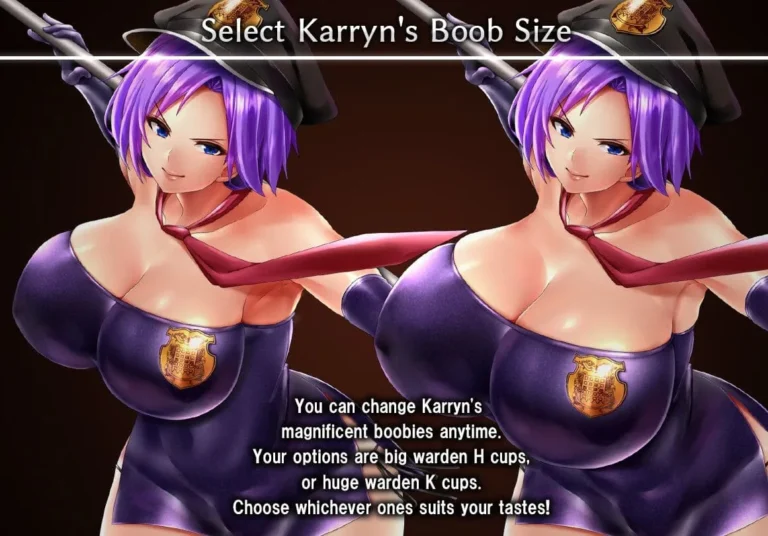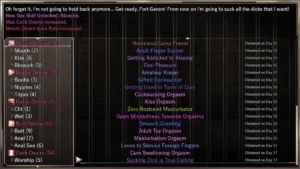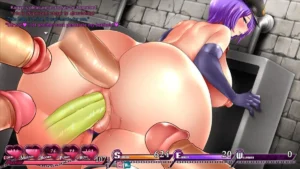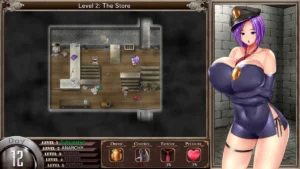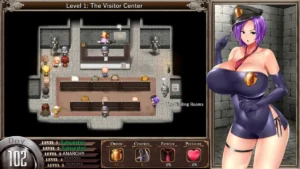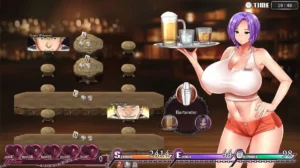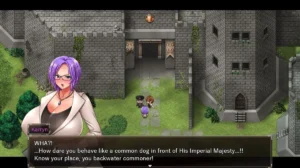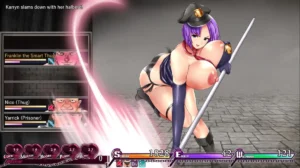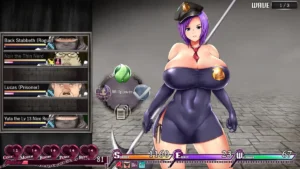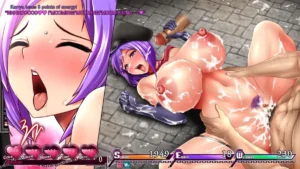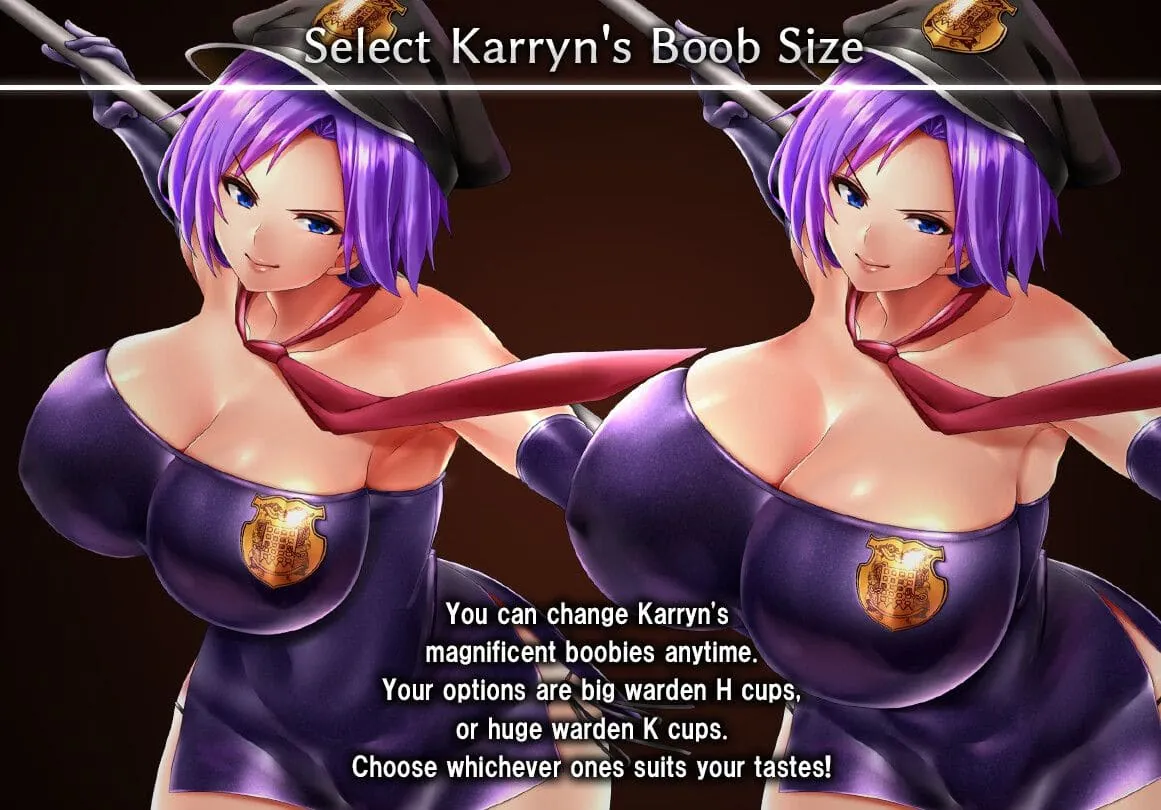
Karryn’s Prison review
Master the mechanics, story choices, and character progression in this unique indie title
Karryn’s Prison stands out as a distinctive indie game that blends visual novel storytelling with role-playing game mechanics in an unconventional prison management setting. Players take on the role of Karryn, a newly appointed warden tasked with managing a correctional facility while navigating complex character relationships and moral decisions. This comprehensive guide explores the game’s core features, gameplay systems, and strategic elements that make it a compelling experience for players seeking narrative-driven gameplay with meaningful consequences. Whether you’re new to the title or looking to deepen your understanding, this guide covers everything you need to know about what makes Karryn’s Prison a standout indie release.
Understanding Karryn’s Prison: Core Gameplay Mechanics and Features
Ever found yourself playing a game that defies easy categorization? 🤔 That’s exactly the experience Karryn’s Prison delivers from the moment you hit start. You’re not just stepping into a prison management sim, and you’re not just diving into a visual novel—you’re experiencing a brilliant fusion of both, wrapped in indie game role-playing elements that create something truly special. I remember my first playthrough, completely unprepared for how deeply I’d get invested in the daily operations and the personal stories unfolding within those cell blocks. This isn’t your typical indie title; it’s a masterclass in blending mechanics from different genres to tell a compelling, player-driven story.
The magic of this game lies in its refusal to be pigeonholed. You’ll spend one moment making critical administrative decisions for your facility, and the next, you’re immersed in a tense, dialogue-heavy scene where every word choice matters. This seamless shifting between gameplay styles keeps the experience fresh and unpredictable. It’s this unique identity that makes mastering the Karryn’s Prison gameplay mechanics so rewarding. You’re not just learning a system; you’re learning a new language of interactive storytelling.
### What Makes Karryn’s Prison Unique: Blending Genres and Storytelling
What immediately sets Karryn’s Prison apart is its fearless genre-blending. 🎭 It takes the strategic, number-crunching satisfaction of a management sim and marries it to the intimate, choice-driven narrative of a visual novel. The result is a game where your efficiency as a warden is just as important as your relationships with the inmates. This creates a constant, engaging push-and-pull. Do you focus on maximizing prison productivity, or do you spend your time building rapport with a particular character to unlock a new story branch?
This hybrid approach means the game constantly surprises you. The prison management simulation gameplay isn’t a separate mini-game; it’s the bedrock upon which the entire narrative is built. Your success or failure in managing resources, assigning tasks, and maintaining order directly influences the story opportunities available to you. A well-run prison provides you with more time and leverage to explore personal stories, while a struggling facility creates tension and conflict that spills over into every conversation. It’s a brilliantly designed loop.
The indie game role-playing elements are woven throughout this foundation. You aren’t just managing a faceless institution; you are Karryn, and your stats, your relationships, and your personal journey are the core of the experience. Your choices shape her personality, her abilities, and ultimately, her fate. This personal stake elevates the management aspects from mere spreadsheet gameplay to a deeply involved character drama.
To give you a quick overview of how these systems interact, here’s a breakdown of the core features:
| Feature | Impact on Gameplay | Character Interaction Depth | Progression Systems | Avg. Playtime (Difficulty Based) |
|---|---|---|---|---|
| Warden Management | High – Affects resources & event availability | Medium – Unlocks new dialogue options | Facility Level & Efficiency | ~12 hours (Easy) |
| Visual Novel Dialogue | Very High – Direct story branching | Very High – Defines relationships | Relationship Meters & Story Flags | ~18 hours (Normal) |
| Corruption System | Extreme – Alters game mechanics & endings | High – Changes how characters perceive you | Corruption Level & Unlocked Abilities | ~25+ hours (Hard & Completionist) |
| RPG Progression | High – Improves stats & combat efficacy | Low – Indirect benefit through stat checks | Skill Trees & Stat Boosts | Varies by exploration |
### Key Gameplay Systems: Decision-Making and Character Interactions
At the heart of the experience is its phenomenal decision-making system visual novel. This isn’t a game with illusory choices; your decisions carry genuine weight and create a truly branching narrative choices consequences system. I learned this the hard way during my first playthrough. I made what seemed like a minor, pragmatic choice early on—prioritizing prison discipline over an inmate’s personal request—and didn’t think much of it. Hours later, I found a whole storyline completely locked off because that inmate’s trust was irrevocably broken. That’s the power of this game; it remembers everything. 🧠
The character progression Karryn’s Prison offers is deeply tied to these interactions. Every conversation is an opportunity. You’re not just clicking through dialogue; you’re actively building (or burning) bridges. The relationships you cultivate with inmates open up new quests, provide you with valuable allies, and can even offer protection during tougher management periods. It’s a system that rewards engagement and punishes indifference, making every interaction feel meaningful.
Pro Tip: Don’t be afraid to use the save system to experiment! The game encourages multiple playthroughs, and saving before a major decision lets you see a glimpse of where another path might lead. It’s the best way to fully appreciate the scope of the branching narrative choices consequences.
Let me give you a concrete example. Early in the game, you encounter an inmate who is being bullied. You have a few options:
* The Authoritarian Path: Punish both inmates equally to maintain order. This seems fair on the surface.
* The Empathetic Path: Listen to the victim’s story and punish the bully specifically, earning their gratitude but potentially being seen as “soft” by others.
* The Neglectful Path: Ignore the situation entirely to focus on “more important” warden duties.
Choosing the empathetic path doesn’t just net you a friend. That inmate may later:
* Provide you with crucial information about a planned riot.
* Voluntarily take on more difficult work assignments, boosting your prison’s output.
* Come to your aid during a personal confrontation, a scene that would never trigger if you had chosen differently.
This is a perfect illustration of the decision-making system visual novel at its best. A simple, early moral choice ripples outwards, changing the character’s availability, the story’s direction, and even the gameplay challenges you’ll face later. It makes the world feel alive and responsive to your presence.
The corruption mechanics indie game fans rave about are also deeply embedded in this system. Your choices don’t just affect your relationships; they affect Karryn herself. Will you make choices that strengthen her resolve and maintain her principles, or will you succumb to the temptations and pressures of prison life? This corruption mechanics indie game is not a simple good/evil slider. It’s a nuanced system that unlocks different abilities, alters dialogue options, and fundamentally changes how you interact with the world and its inhabitants. It’s one of the most satisfying and well-implemented systems of its kind, making each playthrough feel uniquely personal.
### Progression and Character Development Throughout Your Journey
The sense of growth in Karryn’s Prison is phenomenal. The character progression Karryn’s Prison employs is multi-layered, affecting both Karryn as an individual and the prison as an institution. As you play, you’ll improve Karryn’s core stats—like her charisma, intellect, and physical strength—which directly influence your success in conversations, management decisions, and the occasional scuffle. 🏋️♀️ Unlocking new skills in the ability trees doesn’t just make you more powerful; it opens up new solutions to old problems, adding a wonderful layer of strategy to the Karryn’s Prison gameplay mechanics.
This progression is perfectly paced across the game’s chapters. On easier difficulties, you can expect a smooth, roughly 12-hour journey to see the main story through, which is a great way to learn the systems. But the game is packed with so much optional content, alternate paths, and sandbox gameplay elements that replayability is through the roof. After you understand the basics, subsequent playthroughs on higher difficulties or with different role-playing goals in mind can easily double or triple that time.
The integration of loot and desire meters is genius. 🎯 These aren’t just arbitrary numbers; they’re core to the Karryn’s Prison gameplay mechanics loop. Finding better loot improves your capabilities, while managing various desire meters (both yours and the inmates’) adds a constant layer of strategic resource management. Do you use an item to satisfy a craving now for a short-term boost, or do you save it for a more critical moment later? These small, frequent decisions keep you constantly engaged with the game’s systems.
What truly impressed me is how the game tackles concepts that other titles often fumble. Through excellent execution and novel mechanics, it presents its themes with a surprising amount of depth and player agency. The corruption mechanics indie game design, for instance, isn’t about punishing the player; it’s about offering a different set of tools and a different narrative path. A “corrupted” playthrough isn’t a “bad” one—it’s simply another way the story can unfold, with its own unique challenges and rewards.
Ultimately, the character progression Karryn’s Prison offers is about crafting your own version of the story. Whether you become a stern but fair warden, a cunning manipulator, or something in between, the game supports your choices with robust and satisfying indie game role-playing elements. Your journey through the prison walls is uniquely yours, and every decision, every leveled-up skill, and every managed crisis contributes to a deeply personal narrative that you’ll be thinking about long after you’ve put the controller down. ✨
Karryn’s Prison represents a thoughtfully crafted indie game that successfully merges visual novel storytelling with engaging role-playing mechanics and prison management simulation. The game’s strength lies in its meaningful decision-making system, where player choices genuinely impact character relationships and story outcomes, creating a deeply personal gaming experience. With its innovative corruption mechanics, complex character development, and multiple narrative paths, the game rewards both strategic thinking and emotional investment in its world. Whether you’re drawn to narrative-driven experiences, enjoy exploring branching storylines, or appreciate indie games that push creative boundaries, Karryn’s Prison offers substantial content and replayability. The approximately 12-hour campaign provides enough depth to justify multiple playthroughs, each revealing new facets of the story and character dynamics. By understanding the core mechanics, employing strategic decision-making, and embracing the game’s unique approach to storytelling, players can fully appreciate what makes this indie title a standout experience in its genre.
